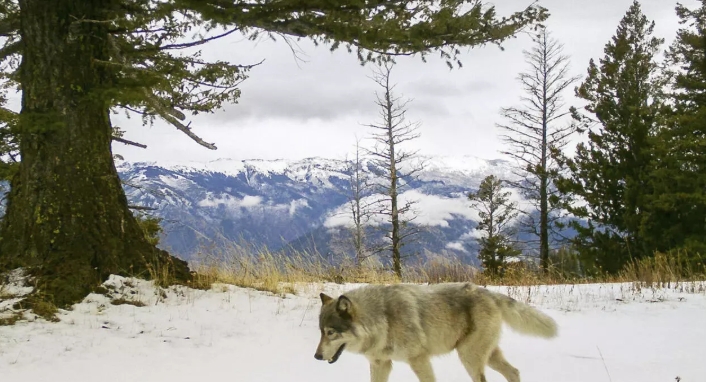Along the California-Oregon border, biologists are experimenting with an innovative solution to protect livestock: drones equipped with loudspeakers that play music and movie clips to deter gray wolves from approaching cattle. Audio clips include AC/DC’s “Thunderstruck”, scenes from popular films, and even heavy metal tracks, all designed to make wolves think twice before hunting livestock.
What Happened?
The USDA’s Animal and Plant Health Inspection Service is testing the use of drones to disrupt wolf predation patterns. Using thermal imaging cameras, drones fly primarily at night when wolves are most active, playing preloaded audio clips, including fireworks, gunshot sounds, and movie dialogue, to distract and scare the animals.
In one notable moment, drone operator Paul Wolf addressed a wolf over the speaker:
“O Wolf – Get out of here.”
The wolf immediately released its grip on cattle and fled, demonstrating the technique’s effectiveness in real-time.
Who Are the Main Players?
- Dustin Ranglack: USDA lead researcher overseeing the drone program, advocating for non-lethal methods to promote coexistence between wolves and ranchers.
- Paul Wolf: USDA Southwest District Supervisor and drone pilot, experienced in observing wolf behavior and responses to drones.
- Mary Ricart: A northern California cattle rancher hosting USDA drone patrols. She reports fewer livestock deaths but remains cautious about the long-term effectiveness of drones.
Background and Timeline
- Early 20th Century: Gray wolves were driven to near extinction in the U.S.
- 1990s: Wolves were reintroduced to Idaho and Yellowstone National Park.
- 2022: USDA began experimenting with drones to prevent livestock attacks.
- 2024: Drones deployed along the California-Oregon border, showing promising initial results.
Public and Social Media Reaction
The response has been mixed:
- Environmental groups praise drones as non-lethal, innovative wildlife management tools. Amarok Weiss, a wolf advocate, said:
“This can be a win for both sides.”
- Ranchers like Mary Ricart express skepticism, warning that wolves may eventually adapt to drones, reducing long-term effectiveness.
Official Statement and What’s Next
The USDA plans to refine drone technology and conduct studies to determine its long-term effectiveness. While drones cost approximately $20,000 each and may have limited reach in wooded areas, they are considered a less deadly alternative to lethal wolf control.
Ranchers can still request permits to cull wolves if livestock is directly threatened, but drone technology may offer a future solution to reduce conflicts between wildlife and farming.
Conclusion
Drones playing music and movie clips represent a creative, non-lethal approach to livestock protection. While challenges remain, this technology offers a promising balance between wildlife conservation and rancher safety, potentially reshaping how humans and wolves coexist in the western United States.

